Sand Reckoner Vineyards
Sand Point Family Vineyards
Clarksburg Merlot 2013
2013 on Nov 2017 — 8 years ago
Jauma
Blewitt Springs Sand on Schist Chenin Blanc
Oak on the nose, herbal, nectarine skin. Taste is mineralic, dry, mellow. Strong acidity. — 8 years ago
Sand-Reckoner
Sand-Decker 7 Red Blend 2013
Amazing, beautiful balance of blackberries, a hint of smoke and plenty of the Earthiness reds from Cochise County are known for. — 9 years ago
Three Wine Company
Spinelli Vineyard Mataro 2013
I love this under-the-radar winery, which specializes in century-old sand-grown reds from Contra Costa. This wine is a smorgasbord of scents and flavors. Earth, caramelized baking spices, iodine, dark berry oozings, vanilla. So rich, it's like liquid food. But, amazingly, it avoids jamminess and heat. Possibly the best wine I've had from these folks yet. — 9 years ago
Adega Regional de Colares
Arenæ Colares Ramisco 2006
Tiny production Ramisco (7,000 bottles) from own-rooted centurion vines on sand dunes outside Lisboa. Aged 3 years in hundred year-old Brazilian oak foudre - wha???
Beautiful wine, tart cherry, dried herbs, a little of that ol' saddle leather too. Moroccan lamb fits the bill rather well. — 10 years ago
Famille Perrin
L'Argnée Vieilles Vignes Gigondas Grenache Blend 2012
Floral bouquet, supple yet fine texture and a bit sappy in finish. Excellent acidity and fine grained tannin. All pre-phylloxera vines planted on sand — 10 years ago
Aaron Wines
Sand & Stone Paso Robles Petite Sirah Blend 2012
Give this one a good decant and the flavors will open up to match the deep fruit aromas on the nose. — 10 years ago
Sand Point Family Vineyards
Lodi Sauvignon Blanc 2014
Very clean — 10 years ago
Neighborhood Vineyards
Mountains to Sand Cabernet Franc 2013
Ripe and fruit forward. Very nice Cab Franc. — 11 years ago
Sand Hill
Durell Vineyard Pinot Noir 2007
Light body but good minerality. Nice finish good with fish or can stand up to grilled salmon. — 12 years ago
Château Brane-Cantenac
Grand Cru Classé en 1855 Margaux Red Bordeaux Blend 2005
I have a six-pack of this 05. I thought after 10 years in bottle, it would be interesting to check in on its evolution. While tasty, I’ll wait another 8-10 to open another. Even after 2-3 hours in the decanter, it’s still a very young adolescent. On the nose, slightly sour blackberries & dark cherries, dark currants, baked black plum, haunting blue fruits, anise, whiff of spice, steeped tea, dry stones, dry crushed rocks with dry top soil, caramel, vanilla with fresh & dry red florals. The body is thick & full. Tannins are starting to round out. It’s velvety on the palate. The fruits are; bright, fresh & ripe and really show the greatness of the 05 vintage. Dark currants, blackberries, dark cherries, baked black plum, haunting blue fruits, baked strawberries, cherries, raspberries on the long set, dark spice, clay & loamy dry top soil with crushed rocks, dry stones, cigar with ash, graphite, dry stems, slight herbaceous character, mint, used leather, clove, caramel, vanilla, fresh & dry red florals with violets. The round acidity is about perfect. The structure and length are still strong. The balance is in harmony. As for the long finish, it’s lush, ruby, rich and well polished. Photos of; Chateau Brane Cantenac, large wood vats, Henri Lurton and Estate vines. Producer notes and history...Chateau Brane Cantenac began in the early 17th century. At the time, the estate was known as Domaine Guilhem Hosten. Even that far back, wine was produced from the property. In fact, the wine was so highly regarded it was one of the more expensive wines in Bordeaux. It sold for almost as much money as Brane Mouton. This is interesting because of who went on to buy the vineyard in the 1800’s. The Baron of Brane, also known as “Napoleon of the Vineyards”, purchased the Chateau in 1833. At the time of the sale, the estate was called Chateau Gorce-Guy. To get the funds needed to purchase the Margaux vineyard, the Baron sold what is now called Mouton Rothschild, which was at the time of the sale, known as Chateau Brane-Mouton. Not such a good move with hundreds of years in hindsight! In 1838, the Baron renamed property taking his name and the name of the sector where the vineyards were located and called it Chateau Brane Cantenac. The Chateau later passed to the Roy family, who were well-known in the Margaux appellation in those days, as they owned Chateau d’issan. Moving ahead to 1920, the Societe des Grands Crus de France, a group of merchants and growers that owned several chateaux located in the Medoc including; Chateau Margaux, Chateau Giscours, and Chateau Lagrange in St. Julien, purchased Chateau Brane Cantenac. Five years later, M. Recapet and his son-in-law, François Lurton, took over Brane Cantenac along with Chateau Margaux. Lucien Lurton (the son of François Lurton) inherited Brane Cantenac in 1956. Today, the estate is still in the hands of the Lurton family. Brane Cantenac is owned and run by Henri Lurton. After being given the responsibility of managing Brane Cantenac, it was under the direction of Henri Lurton that large portions of the vineyard were replanted. Vine densities were increased, the drainage systems were improved and the plantings were also, slowly changed. The vineyard of Brane Cantenac is planted to 55% Cabernet Sauvignon, 40% Merlot, 4.5% Cabernet Franc and .5% Carmenere. Carmenere was used for the first time in the 2011 vintage. The only other Chateau I know that still uses Carmenere is Clerc Milon. The 75 hectare Left Bank vineyard of Brane Cantenac is essentially unchanged since it earned Second Growth status in the 1855 Classification. At least that is the case with the 45 hectares used to produce the Grand Vin of Brane Cantenac. Those 45 hectares are planted surrounding the Chateau. Those vines are located just in front of the Cantenac plateau and are the best terroir that Brane Cantenac owns. They have other parcels, which are further inland and much of those grapes are placed into their second wine, Le Baron de Brane. Those additional hectares can be divided into 3 main sections. Behind the Chateau, they have 15 hectares of vines on gravel and sand, 10 hectares across the road with sand, gravel and iron and a 13 hectare parcel with gravel called Notton, which is used for their second wine. The vineyard is planted to a vine density that ranges from 6,666 vines per hectare on the plateau and up to 8,000 vines per hectare for the vines located behind chateau, in their sandier soils. The higher levels of vine density are always found in the newer plantings. The terroir of Brane Cantenac consists of deep gravel, sand and clay soil. Experiments in the vineyards are currently looking at becoming more organic in their vineyard management. Today, more than 25% of Brane Cantenac is farmed using organic farming techniques. It is expected that over time, the amount of hectares farmed with organic methods will be increased. Brane Cantenac has gone through 2 relatively recent modernization’s in 1999, when they added began adding the first of their smaller vats to allow for parcel by parcel vinification and then again in 2015 when they completed a much more complete renovation of their cellars and vat rooms. While Brane Cantenac is a traditional producer, they are no stranger to technology as they were one of the first estates to embrace optical grape sorting machines. In very wet vintages, they can also use reverse osmosis. To produce the wine of Chateau Brane Cantenac, the wine is vinified in a combination of temperature controlled, traditional, 22 oak vats, 18 concrete tanks and 20 stainless steel vats that vary in size from 40 hectoliters all the way up to 200 hectoliters, which allows for parcel by parcel vinification. 40% of the fermentation takes place in the oak vats. The oldest vines are vinified in vats that are selected to allow for separate parcel by parcel vinification. The younger vines are vinified more often together in the same vats. However, the Carmenere is entirely micro-vinified, meaning that those grapes were completely vinified in barrel, using micro-vinification techniques. This can also happen because the amount of grapes produced is so small. Some vats can be co-inoculated, meaning they go through alcoholic fermentation and malolactic fermentation simultaneously. At Chateau Brane Cantenac, malolactic fermentation takes place in a combination of French oak tanks and barrels. The wine of Brane Cantenac is aged in an average of 60% new, French oak barrels for 18 months before bottling. The initial 2 months of aging is done with the wine on its lees, which adds more depth to the wine. There second wine is Le Baron de Brane. Le Baron de Brane is not new. In fact, previously, the second wine went under the name of Chateau Notton, which took its name from one of the main parcels where the grapes were planted. During the late 1950’s and into the 1960’s, having a second wine was important as the estate declassified 3 vintages, due to extremely poor, weather conditions in 1956, 1960 and 1963. Production of Chateau Brane Cantenac is about 11,000 cases per year. — 8 years ago

Arianna Occhipinti
SP68 Bianco Terre Siciliane Albanello Muscat of Alexandria 2014
"1983 (A Merman I Should Turn To Be)"
so my darling and I
make love in the sand
to salute the last moment
ever on dry land
our machine has done its work
played its part well
without a scratch on our bodies
and we bid it farewell
starfish and giant foams
greet us with a smile
before our heads go under
we take a last look
at the killing noise
of the out of style...
#jimihendrix — 10 years ago
Wind Gap Wines
Sceales Vineyard Old Vine Grenache 2013
The best of all 10 Wind Gap wines I tried today. And one of the cheapest. 13.75% alc and it shows. Love the Jolly Rancher strawberry flavor. Gum coating tannins. Wish more of their wines had this slight added layer of ripeness. From 85 year old vines grown on pure sand in Alexander Valley. Made in a concrete egg. A huge surprise. — 10 years ago
Felton Road
Bannockburn Pinot Noir 2011
A luggage export from my time in NZ. Body was middle weight, and showed off mostly darker cherry, toasty cranberry character and dried herbal. Tannins had integrated nicely and were a little larger grain (180 grit sand paper). More masculine and muscle in its fruit expression and typical of Otago. — 10 years ago
Ravine Vineyard Estate Winery
Sand & Gravel Niagara Peninsula Riesling 2011
From our Niagara trip — 12 years ago
Sand Point Family Vineyards
California Pinot Noir 2016
Super jammy and delicious!
— 8 years ago
Château Rayas
Réservé Châteauneuf-du-Pape Grenache Blend 2001
2001 vintage. Dried dark red roses, brooding red and black cherries, blackberries, cinnamon, baking spices. Slight black tea and meat, smoke. Red clay/sand. — 8 years ago

TenutÆ Lageder
Am Sand Gewürztraminer 2015
Very aromatic. Pineapple fruit on the nose, then turns dry with a light bitterness. Medium long finish. Medium bodied. Delicious. — 8 years ago
Thibaud Boudignon
Rosé de Loire Cabernet Franc Rosé 2016
Pretty thing. Maybe it's the quality behind cab franc rose or maybe I'm.. all-loired to the region nope doesn't work. Salmon color tint of orange, white cherries, white peach, some lemon, some tea. Not a fan of drier roses, but this is perfect. Very dry, touch of sand/salt minerality. There is decent depth in the body and flavors that should allow it to be flexible for whatever you want to eat. — 8 years ago
Greystone
Sand Dollar Waipara Valley Pinot Gris 2016
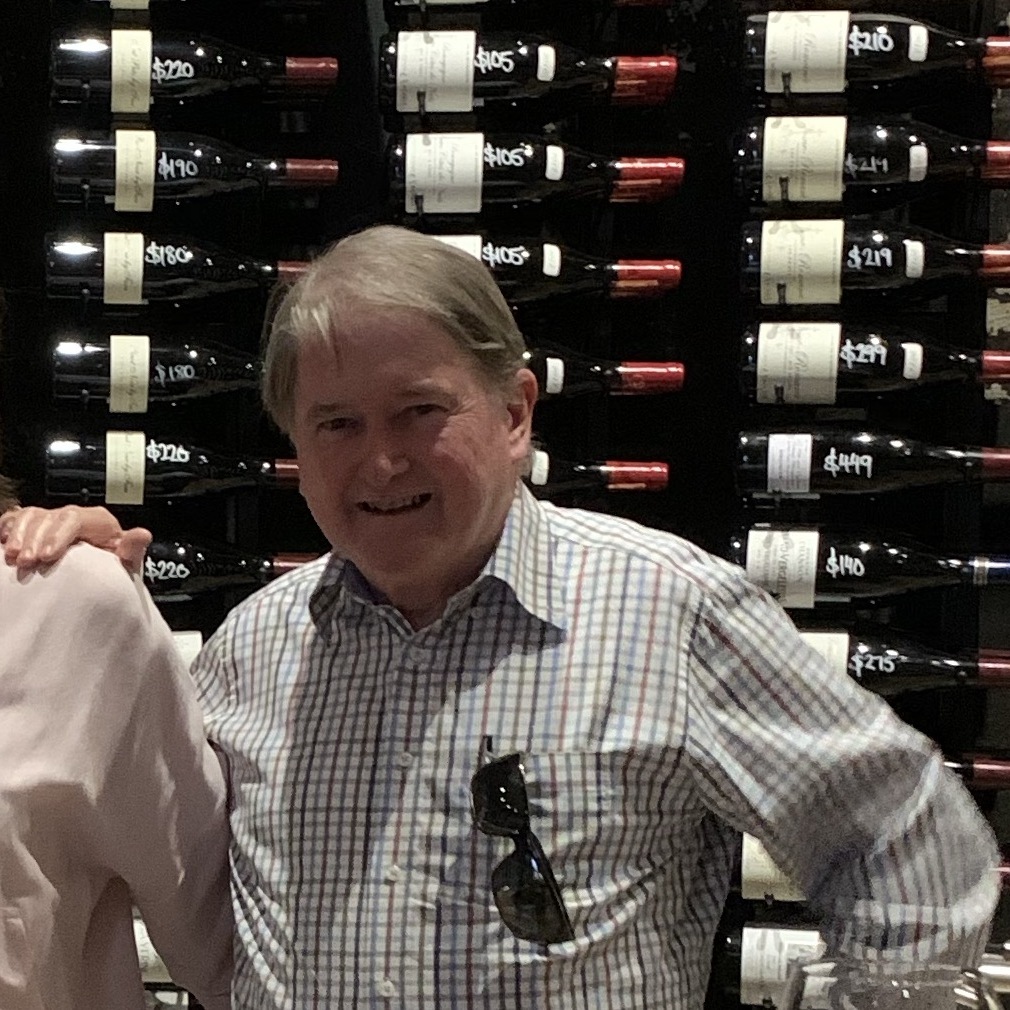
Sand Castle Winery
Alpine Spice Estate Grown White Blend
Drink it hot or chilled. Apple pie in a glass. — 9 years ago
Sand Castle Winery
Claret Central Delaware Valley Sweet Red Blend
Light fresh and floral — 10 years ago
Sand Point Family Vineyards
Lodi Chardonnay 2013
Crisp and easy to drink — 10 years ago
Unico Zelo
River Sand Fiano
Frangipani, quince, lemonade, apple sauce and a squeeze of lime. Medium bodied in the palate with texture set to oily and finishes off with a medium, slightly bitter, finish. — 10 years ago
Bedrock Wine Co.
Evangelho Vineyard Heritage Zinfandel Blend 2013
Very reticent to give up much on the nose, just a bit of red berry. Wonderful taste of a mix of red and black fruit and baking spice. While lighter than many field blends, it still has a nice velvety mouthfeel with some dusty tannins on the finish. Must be that Contra Costa sand! — 10 years ago
Ravine Vineyard Estate Winery
Sand & Gravel Cabernet Franc 2011
Really like it. Big tannins and medium finish. Classy. Cab Francs can be ashy, bit smokey and lopsided. This one stands on its own. Balanced! — 11 years ago
Sand Castle Winery
Cabernet Sauvignon
Date night wine! At easy cuisine — 12 years ago
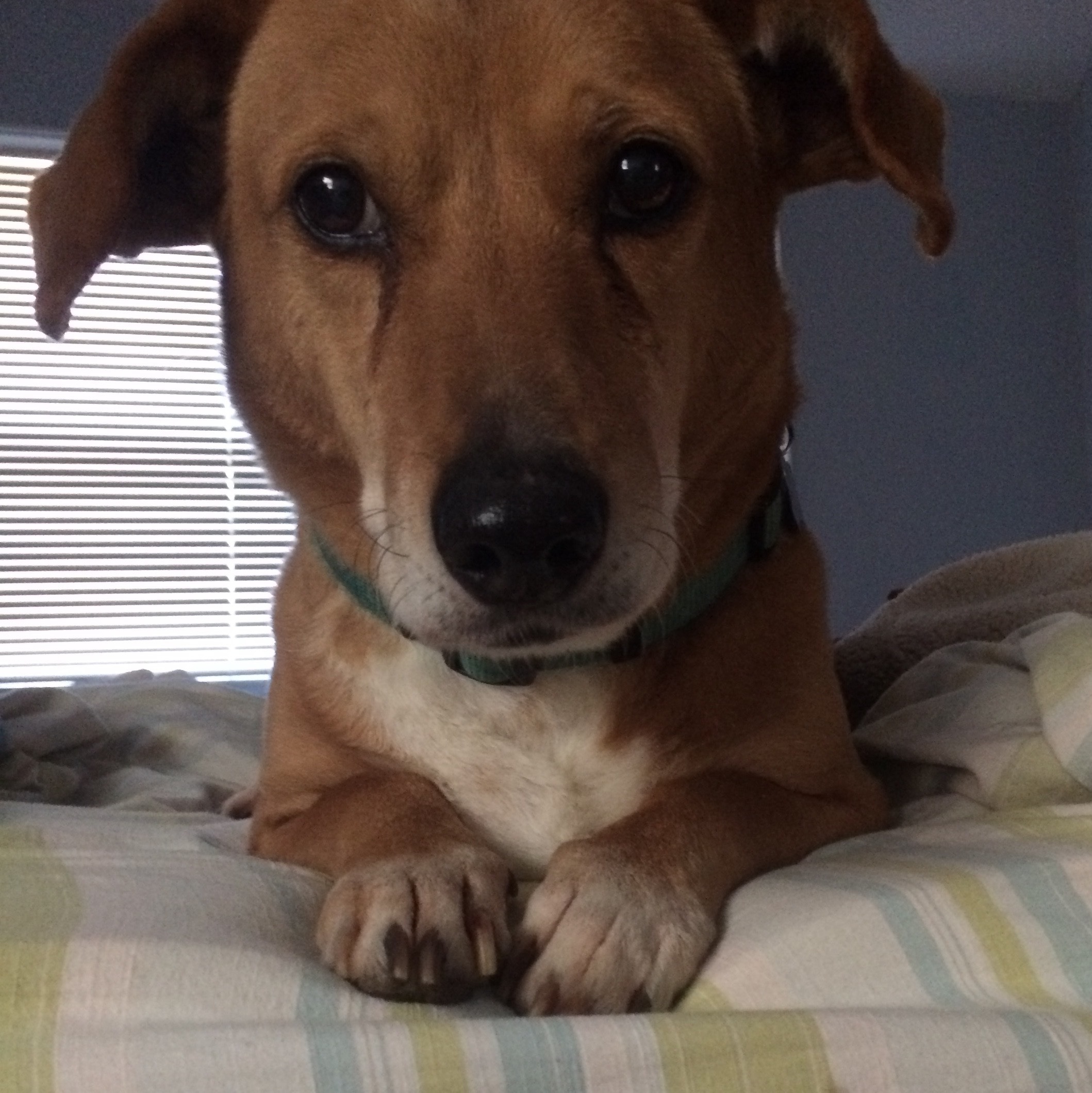


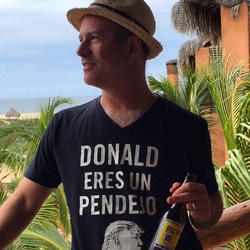






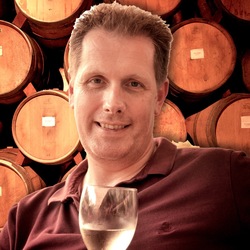






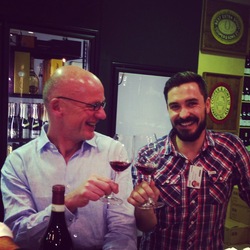



Matt Trader
Beautiful example of top class grand cru St. Emilion - 2014 was a decent year with a good spring, but fairly humid and grey in the summer with more rainfall than normal, and more than the left bank areas saw. Given clay isn't very free draining, the areas that had more sand and gravel drained a little better resulting in great Cabernet Franc, and decent Merlot. That being said, the wine from this estate is beautiful, fleshy, and supple, with acidity and slightly grippy tannins that will help this wine to continue aging. Black plummy fruits, cherry reduction, bell pepper, tobacco, purple flower florals. 90% Merlot, and 10% Cabernet Franc, aged in new oak barrels 50% on lees for 17 months, and no fining. This is a great value to have in the cellar, especially if you secured any 2015's that absolutely will need time, these can be opened now but aged for several more years. — 7 years ago